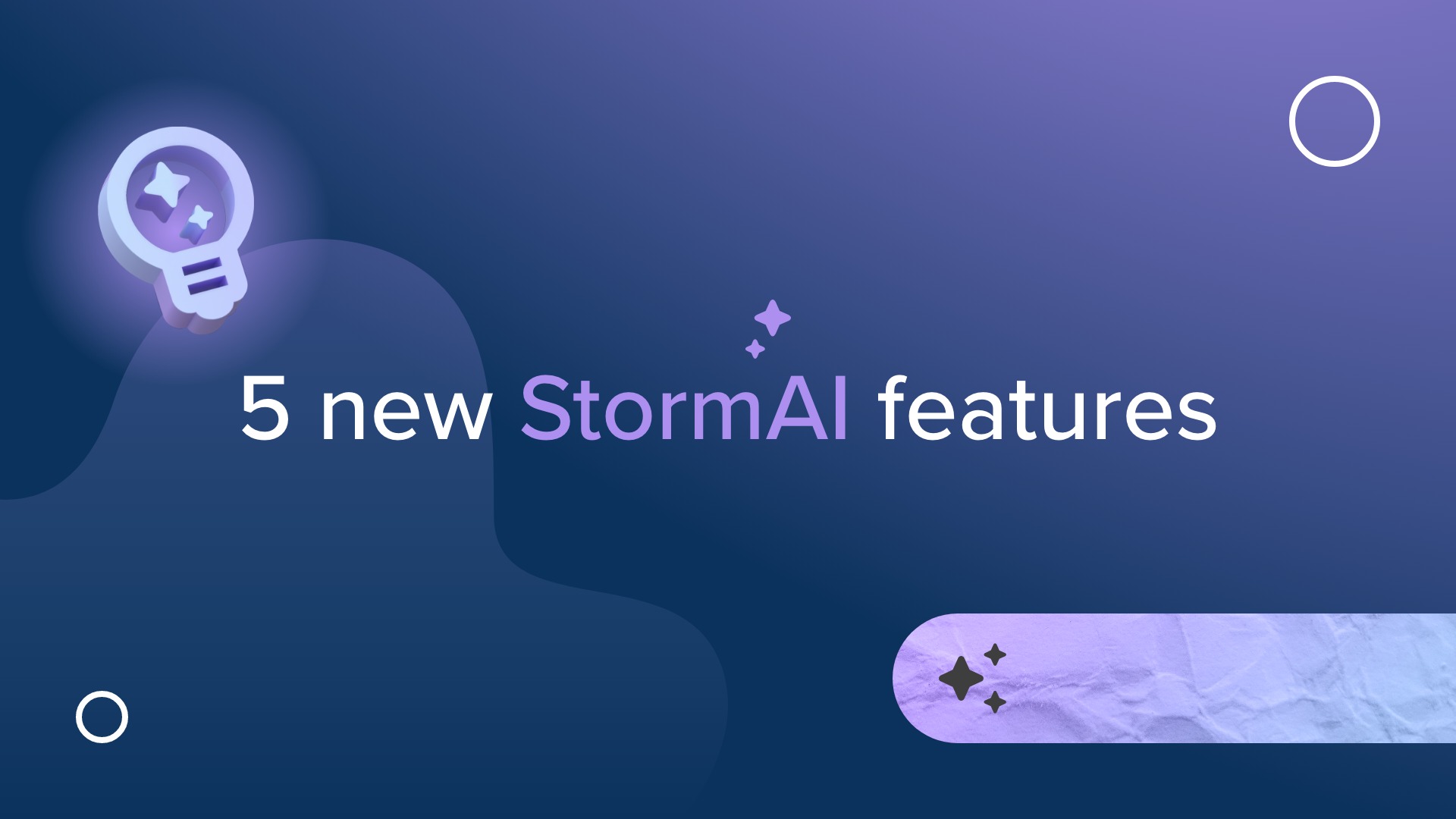Your Guide to Stormboard’s Feature Specification Template
The Feature Specification Template will help to guide you in creating a product people love. Ensuring that you have well thought out feature specifications will allow you to identify and overcome any objections users may have when deciding whether or not to purchase your product.
What is the process used with the Feature Specification Template?
The Feature Specification template and process allows you and your team to mitigate risks before your project starts. Using this process, guided by the Stormboard template, will allow you to mitigate risks likely reducing costly problems or wasteful actions.
The template will also allow for a streamlined development process and convincing product design, ultimately aimed at creating happy stakeholders and happy product users.
Who should use this template?
If you are a team (of any size) that focuses on product development or a service of some sort, this template will work well for you. It can also work for project management teams.
The eight sections give a great overview of the specific features that are going to be included, or are already included, in your product or service. You can use the template to dive into one specific feature or to broadly look at multiple features.
The finished document should be clearly understood by all company members and stakeholders.
How to use Stormboard’s Feature Specification Template
The Feature Specification Template guides you through the steps necessary to create and describe new features for your product or service.
The template is divided into eight sections that walk you through the process of defining the purpose of the project, who your target audience is, the key features that you are going to highlight — including any things that it won’t do — adding screen mock-ups to see how the features will function, defining any questions that will have to be added regarding the features, estimates, and creating a process flow.
Purpose of the Project is exactly as it sounds. This is where you define the purpose of the project you’re working on, whether it be a service you offer, a specific feature, multiple features, a product, etc.
The Target Audience section is where you will identify the audience you want to target. Be as detailed as possible.
In the Key Features section include the most important features of your product or service that are the most marketable.
Things it Won’t Do is where you document what the product or service doesn’t do/what features it doesn’t have. This is important because you need to be clear on the features offered, which includes identifying what it can’t or won’t do
Screen Mockups refers to examples of how the features will function when they are ready. These can include screenshots, demos, etc.
In the Questions section, define any questions that will have to be added regarding the features. These can be questions from your team, questions from customers, and so on.
Next is Estimates. For this section, include any estimates regarding the project. These can be time estimates, estimates about users, and so on.
The last section, Process Flow, is where you and your team can plan out the process you plan on following to execute the product feature development. Be as detailed or general as you want, but make sure you document each step in the flow.











